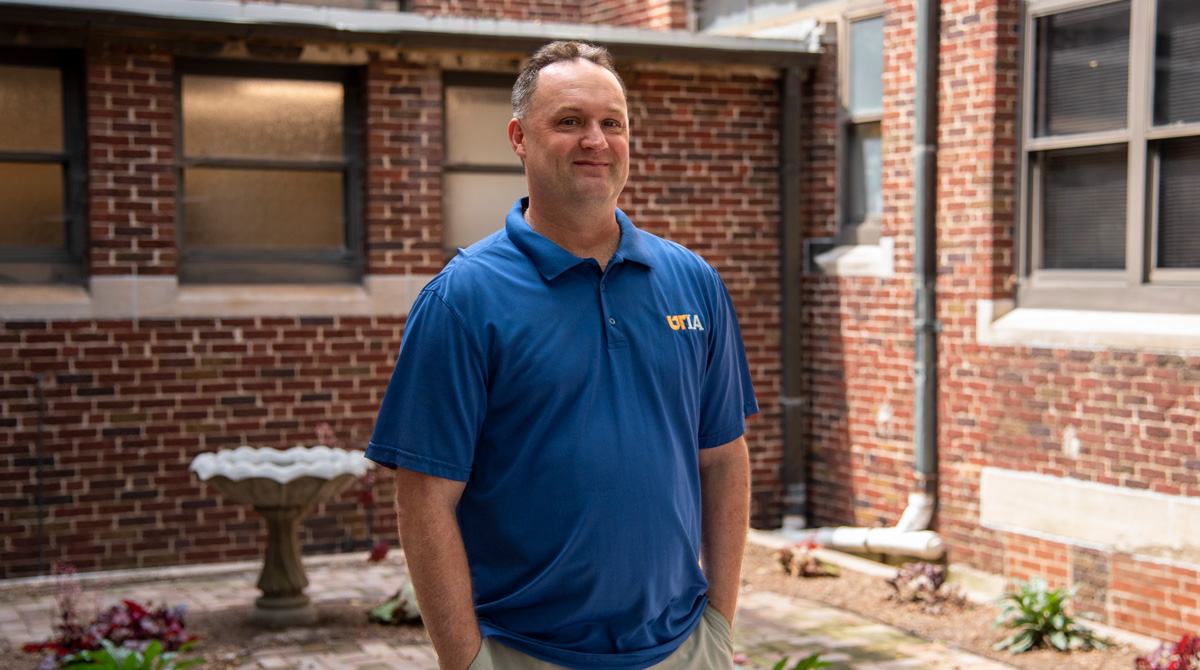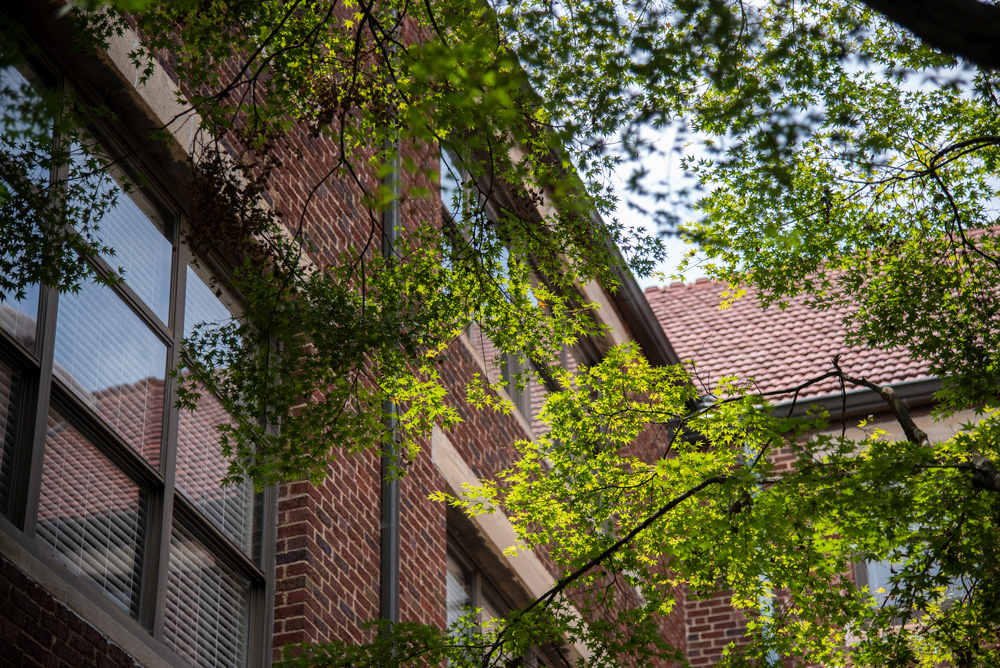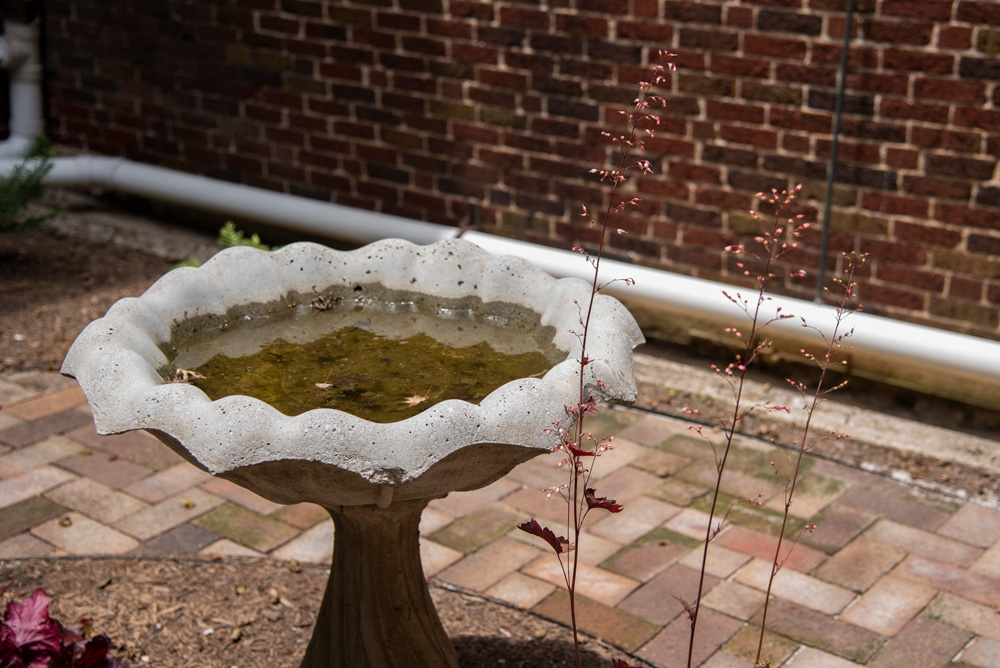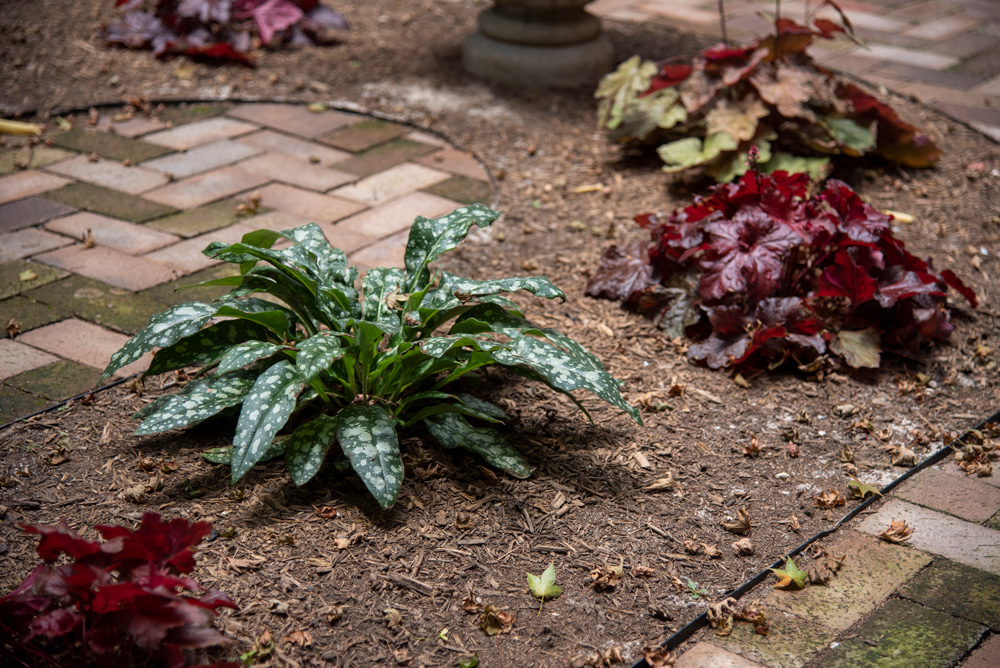
Much attention has been given to the front of Morgan Hall during this, the building’s centennial year. The front is the most visible face of the building and also one of the sides of the cornerstone, behind which the 1919 time capsule was recovered.
Yet a special part of the grounds behind the building has been receiving attention through the efforts of Brian Turner, services supervisor with UTIA General Services. Turner organized and almost singlehandedly renovated a neglected area tucked away to the left of the building’s rear entrance that has become and been named the Centennial Garden.
Located in a recessed area between the central corridor and the Office of Marketing and Communications, the garden offers a shady and quiet spot for employees to take a break, have a moment of privacy, or enjoy a lunch. A Japanese maple, ferns, yews, coral bells, spotted lungwort, and other shade-loving plants add beauty, as does the decorative herringbone brickwork. A large birdbath and the weathered patina of the paving stones add to the tranquility.

“I’d had my eye on that spot for a long time,” Turner says. “But it wasn’t until Ellington Plant Sciences Building came down that we had the resources on hand to renovate it.” Those resources include pavers, which Turner removed himself, and cement cap block that Facilities Services removed. Some of each were used for the new garden, with other pavers to be used at the Clyde M. York 4-H Center in Crossville. Turner and General Services also salvaged plants from the demolition area and relocated several to the patio area on the east side of Morgan Hall. Flagstone was also recovered from the demolition area and has now been sent to the Clyde Austin 4-H Center in Greeneville for use there.
“What made this project possible is that so much of the resources were in hand,” Turner says. “It felt good that we didn’t have to put a lot of financial resources into this. Instead, the project largely used what we had in hand and consisted mostly of just labor.” Turner provided that labor while also managing his day-to-day responsibilities of his job. He started the project last year, on the Monday following Thanksgiving, and wrapped it up by the end of April.
“I wanted to have the project finished before most people returned to work on campus, both so someone wouldn’t come across the site before it was finished and to have this garden ready and available for people to use. During COVID, we all have needed spots like this to have a private moment or break.”
Last year’s shift to remote working during the early stages of the pandemic also had a role in how the project began.
“During Phase Zero, when we were all working from home, I was doing a lot of training on the computer,” Turner says. “I decided to take the Tennessee Master Nursery Producer certificate training.” The project, he says, grew from that.
Joe Cagle, assistant director of General Services, says Turner also has unique skills that helped make the project a success. “Brian has fifteen years of experience working on campus doing projects. He is good at developing relationships with people and finding resources among our units.”
Turner is quick to credit others for assistance they provided to the project. Andy Pulte, distinguished lecturer and director with the Department of Plant Sciences, shared ideas of paver design. Drew Bogert, research specialist with the department, and a member of the UT Gardens, Knoxville, staff, used a Bobcat to transport pavers set on pallets. Facilities Services helped to load supplies and provided sand, gravel, and mulch, and General Services provided the plants. Cagle helped to select them and as well as the planting design. Theresa Townsend, service assistant III with the unit, stepped in to provide assistance that freed Turner at times to tend to the garden.
Turner began the renovation by pulling weeds from the area and removing soil. He then brought in sand and gravel and rebuilt the soil in some areas for the planned design. An arch design featured in the paving stones required the bricks to be cut, then edged to form the curving shape. After Turner laid the pavers, planting took place. There was even the emptying out a drainage pipe along one wall and some planned retouches of metal areas using the bronze paint featured in Morgan Hall exterior metals. “It was a long process, a lot of things to do,” Turner says. “It went, and it went, and it went.”
Now that the garden is complete, Turner and Cagle are maintaining the small spot. Reflecting on the project as a whole, Turner says, “It feels great knowing I was able to see it through, from start to completion, and that the garden is being well received.”
A plaque will be installed ahead with the garden’s name and a note that it was completed during Morgan Hall’s centennial year. Meanwhile the quiet area, its plants, shade, and welcoming chairs are all in place and ready to be enjoyed.

